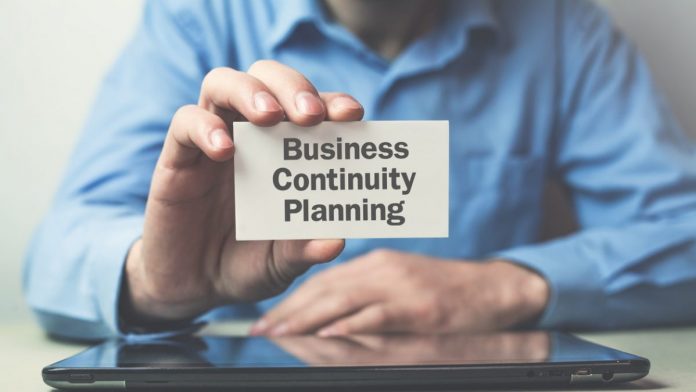 The Short List ; )
The Short List ; )
- How does your plan help you dynamically define the recovery steps for the specific disaster event?
- How does your plan incorporate remote resources and staffing ATOD (At Time of Disaster)?
- How does your plan address closing the business pre-emptively?
- How does your plan enable you to manage critical stakeholder and vendor/customer relationships ATOD?
- How does your plan facilitate creation of emergency wallet cards?
- How does your plan facilitate recovery needs analysis and solution adequacy before and during a disaster event?
- How does your plan distinguish between competing objectives within a common recovery tier ATOD?
- How does your plan enable on-the-fly recruitment of response & recovery team members ATOD?
- How does your plan distinguish between the loss of centralized processes versus decentralized processes ATOD?
- How does your plan help you dynamically identify shortfalls in your recovery resources before and during disaster events?
- How does your plan dynamically incorporate hardware dependencies into recovery procedures ATOD?
- How does your plan control and manage the acquisition of the myriad miscellaneous requisites of all of your departments ATOD?
- How does your plan manage real-time adjustments to criticality and resource needs ATOD?
- How does your plan integrate your BIA data?
- How does your plan establish command and control during and after an unplanned evacuation?
- How does your plan facilitate the simplest use by the broadest range of people?
- How does your plan address resumption of Business Processes following a recovery?
- How does your plan enable on-the-fly recruitment of production team members and general staff ATOD?
- How does your plan support operating departments, branch offices, regional offices and home offices?
- How does your plan facilitate event monitoring ATOD?
- How does your plan address situations that do not qualify as a disaster event?
- How well does your plan make it possible for junior staff to direct response/recovery efforts in the absence of experience (trained) management?
- How does your plan interface with other recovery processes or plans from other locations and/or business units?
- How does your plan address different types of disaster events?
- Can your plan help you identify the different types of impact and their urgency ATOD?
- How does your plan facilitate when not to declare a disaster?
- How does your plan address point-in-time synchronization of data after a priority group has been restored?
- How does your plan manage the allocation of recovery resources ATOD?
- How does your plan identify critical infrastructure when only application loss is known ATOD?
- How does your plan incorporate capital assets and other key factors of production into real-time recovery procedures?
- How does your plan eliminate maintenance whenever possible and reduce the maintenance that remains?
- How do you ensure plan currency?
- How does your plan help determine how much time is available prior to an event before you need to take action?
- How does your plan manage your inventory of available, repurposable assets across the enterprise?
- How does your plan address ATOD insurance claims?
- How does your plan address recovery gaps between business need and company capability ATOD?
- How does your plan control shelter-in-place procedures before, during, and after an event?
- How does your plan allow you to leverage existing infrastructure for recovery or fail-over purposes ATOD?
- How does your plan enable DR staff to repurpose existing hardware for recovery/production use ATOD?
- How does your plan help you keep track of all of the teams involved in DR and BC efforts ATOD?
- How does your plan facilitate mobilization and deployment of staff across multiple locations?
- How does your plan enable key response teams to begin a crisis response remotely when shelter-in-place is called for?
- How does your plan facilitate pre-emptive recovery tasks?
- How does your plan help you address recovery priorities and/or recovery requirements that fall outside of the “normal” timeline?
- How does your BIA data help you identify downstream production issues given the loss of applications?
- How does your plan enable ad hoc alternate work locations ATOD?
- How does your plan allow you to model and optimize your response and recovery capabilities prior to a disaster event?
- How does your plan address business unit migration to the Home Site?
- How does your plan help you define recovery priorities at time of disaster based on the specific impact scenario?
- How does your plan facilitate different views of plan data ATOD?
- How does your plan address recovery team structure?
- How does your plan accommodate emergency response and recovery staff during a prolonged recovery effort ATOD?
- How does your plan help determine short-term and long-term severity of an impending threat or event?
- How does your plan facilitate managing multiple process/application priority groups ATOD?
- How does your plan address disruption to the chain of command ATOD?
- How does your plan direct the execution sequence of recovery tasks ATOD?
- How does your plan help you navigate the complexities of a full-scale DR/BC recovery effort?
- How does your plan facilitate just-in-time supply-chain capabilities ATOD?
- How does your plan manage command and control across multiple locations, multiple objectives, and multiple levels of competency ATOD?
- How does your plan address the return to your production Home Site?
- How does your plan address emergency shut-down of the data center?
- How does your plan facilitate communiqué development ATOD?
- How does your plan accommodate production cycle delays and restarts into planned RTOs ATOD?
- How does your plan facilitate multi-threaded execution?
- How does your plan enact remote management of response efforts in the absence of communications channels?
- How does your plan address different levels of impact ATOD?
- How does your plan manage the processes that must follow an evacuation in an unknown event?
- How does your plan prioritize the recovery of infrastructure assets ATOD?
- How does your plan facilitate disaster and regional disaster mitigation?
- How does your plan help you plan recovery efforts for the immediate timeframe as well as the next timeframe?
- How does your plan facilitate reprioritization of assets and efforts ATOD when recoverability falls short of scheduled objectives?
- How does your plan address recovery procedures?
- How does your plan deal with specific individuals?
- How does your plan help management to dynamically identify all interface points with all plans at all locations ATOD?
- How does your plan facilitate supply chain and manufacturing resource planning?
- How does your plan provide operating departments with critical alternative processing procedures ATOD, in the absence of on-site management or a distributed workforce?
- How does your plan facilitate an iterative, collaborative allocation and prioritization of response efforts and assets ATOD?
- How does your plan address non-business continuity incidents like pandemic operations, supply chain continuity, product liability, manufacturing resource continuity, etc.?
- How does your plan address sector-level crises that indirectly affect your company?
- How does your plan address hardware availability issues?
- How does your plan identify opportunities to eliminate wasteful recovery overhead?
- How does your plan address ATOD purchasing?
- How does your plan control internal and external messaging ATOD?
- How does your plan help you decide if you have had a disaster?
- How does your plan facilitate distributed maintenance while ensuring centralized control?
- How does your plan track the interdependencies of different departments who rely on common application suites?
- How does your plan direct management to continue production operations when planned RTOs are not met ATOD?
- How does your plan help you decide between different priorities ATOD?
- How does your plan help you decide when to declare a disaster?
- How does your plan facilitate and accommodate changes to recovery objectives, priorities and requirements ATOD?
- How does your plan support rapid implementation?
- How does your plan address reputational crises before, during, and after an event?
- How does your plan help allocate recovery resources based on ATOD needs?
- How does your plan direct communications ATOD?
- How does your plan leverage existing facilities and office space ATOD to minimize the need for subscription resources?
- How does your plan map out recovery sequences across diverse, cross-functional teams ATOD?
- How does your plan account for multiple potential alternate work locations ATOD?
- How does your plan address enterprise-wide management oversight ATOD?
- How does your plan account for acquisition logistics and timing related to replacement equipment or hardware ATOD?
- How does your plan define evacuation requirements and procedures ATOD?





